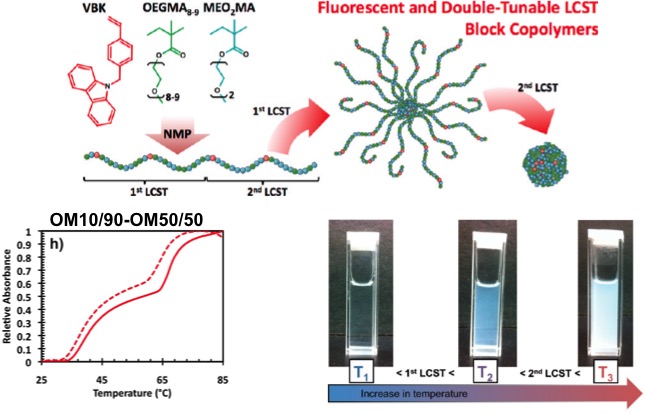Nitroxide Mediated Polymerization (NMP) of Smart Materials
The over-arching theme is to develop novel block, gradient and statistical copolymers via CPR, specifically NMP, that are capable of self-assembling in solution or bulk into desirable structures for current organic electronic devices such as OLEDs or organic photovoltaics (OPV)s and for biomedical materials. CRP provides much more facile synthetic routes towards obtaining copolymers with controlled microstructure compare to traditional living methods such as ionic polymerization. Further, CRP in many cases permits the combination of monomers, which would otherwise be not possible via living methods. Additionally, CRP can yield block copolymer latexes in aqueous media, which is not possible by living methods. Thus, a wider span of materials can be accessed via CRP, and permit tailoring of properties that was previously not possible. In recent reviews, NMP has been touted to have some favourable advantages compared to other CRP methods – namely that it does not require metallic containing species that require post-polymerization purification or sulfur-containing ligands that require removal after polymerization. Consequently, NMP has been viewed as being particularly useful method for novel biomedical or organic electronic materials.
Stimuli-responsive block copolymers via NMP made with multiple transitions (adapted from Lessard, B.; Ling, E. J. Y.; Marić, M. “Fluorescent, Thermoresponsive Oligo(ethylene glycol) Methacrylate/9-(4-vinylbenzyl)-9H-carbazole Copolymers Designed with Multiple LCSTs via Nitroxide Mediated Controlled Radical Polymerization” Macromolecules 2012, 45, 1879-1891).
